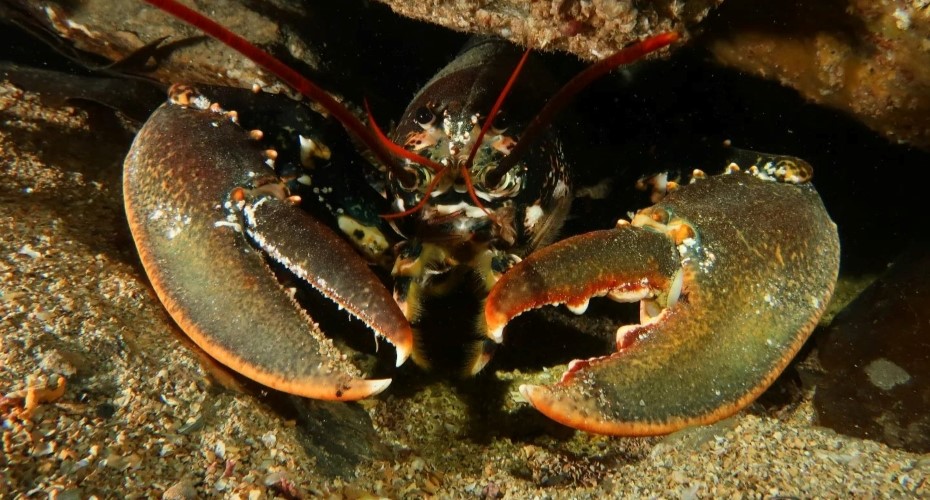Dutch lobsters are a uniquely isolated population

A European lobster. Photo: Luke Bullus
Scientists from the University of Exeter have identified a unique and isolated lobster population in the Netherlands, new research shows.
European lobsters (Homarus gammarus) are a highly prized seafood, targeted by fishers throughout their range.
Building on existing research, scientists from Exeter partnered with Wageningen Marine Research (WMR) to assess the genetic diversity of lobsters from the Oosterschelde, a semi-enclosed Dutch tidal bay.
Using advanced methods to sequence sections of lobster genomes, they found Oosterschelde lobsters are strikingly different to samples from all other sites across Europe.
European lobster populations are generally connected by occasional dispersal of individuals between adjacent stocks, primarily via tiny drifting larvae.
Remarkably, the researchers found that lobster stocks from the extremes of their Atlantic range, from Norway and Morocco, show greater genetic similarity to each other than Oosterschelde lobsters show even to adjacent stocks of the southern North Sea.
The investigation suggests that their divergence is underpinned by both genetic drift (random changes in genomic variation over time) and local adaptation (genetic mutations which improve breeding success in a given environment).
The results strongly indicate that the Oosterschelde lobster stock is unique in being totally isolated from others and is effectively “self-recruiting” – it relies solely on the contribution of local breeding to supply future generations.
The study has important implications for the area’s lobster biology and fishery, says Exeter-based lead author Dr Charlie Ellis.
“These results help explain why Oosterschelde lobsters have limited genetic diversity, and seem more prone to large fluctuations in abundance,” he said.
“Their lack of larval exchange with stocks elsewhere likely makes them more susceptible to, and slower to recover from, incidences of disease or overfishing. Intriguingly, we also found that genetic variants unique to Oosterschelde lobsters were expected to alter key genes, including an important gene linked to tolerance of low oxygen conditions that affected the bay historically. This suggests that the Dutch lobsters may have adapted to live and breed in the Oosterschelde environment more successfully.”
Dutch scientist Nathalie Steins, of WMR, added: “Because they are essentially self-sustaining, the Oosterschelde lobster stock should be proactively monitored, something we are now trying to do. That way we can ensure that important biological characteristics are understood and not inferred from unrelated stocks, and we can explore whether existing management measures effectively safeguards this important local fishery”.
A fundamental challenge of seafood sustainability is to ensure that fisheries management plans reflect the spatial boundaries of biological populations, understanding of which can be supplied by studies of population structure and connectivity.
The paper, published in the ICES Journal of Marine Science, is entitled: “Genetic divergence and adaptation of an isolated European lobster population in the Netherlands.”



